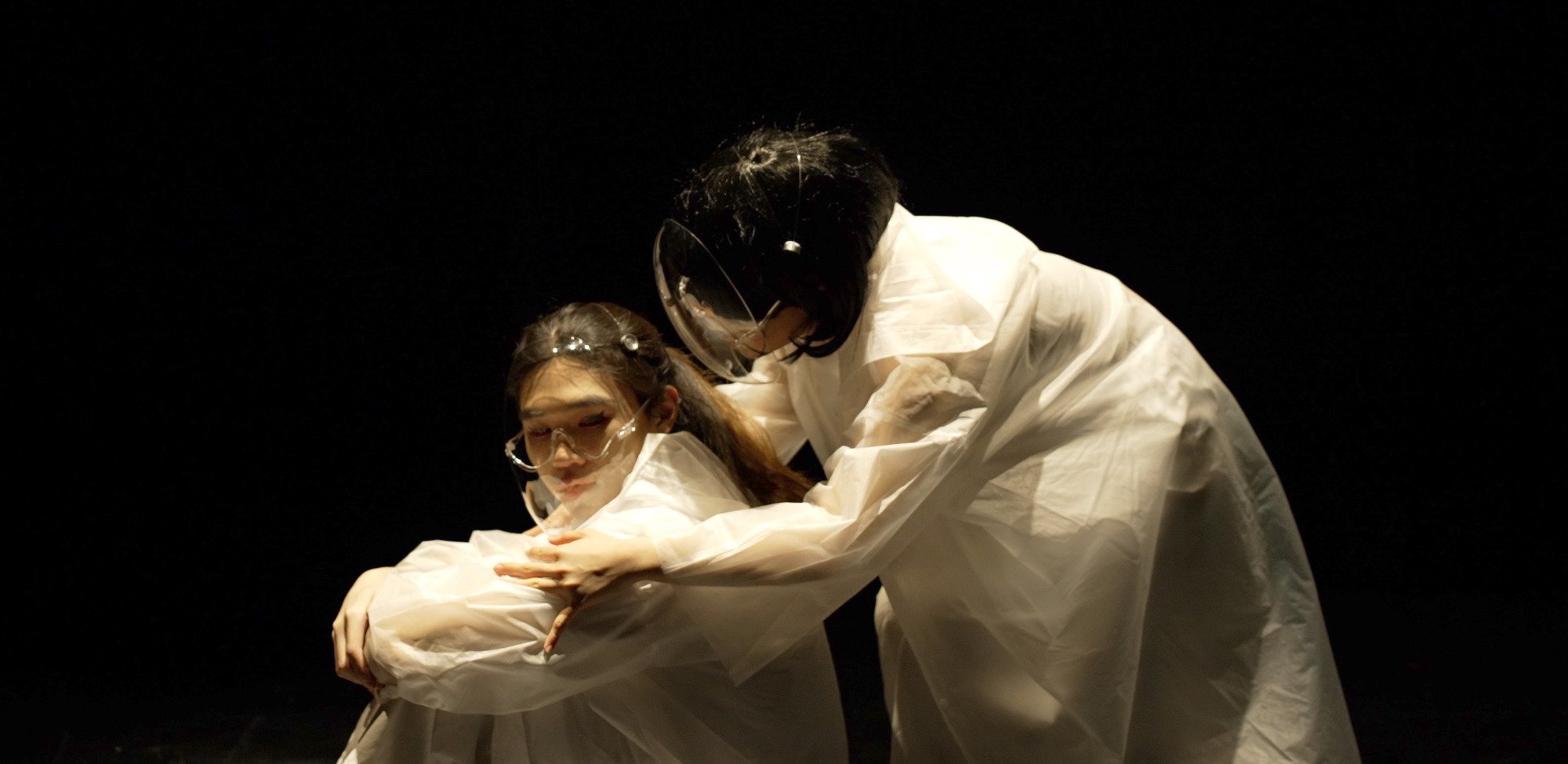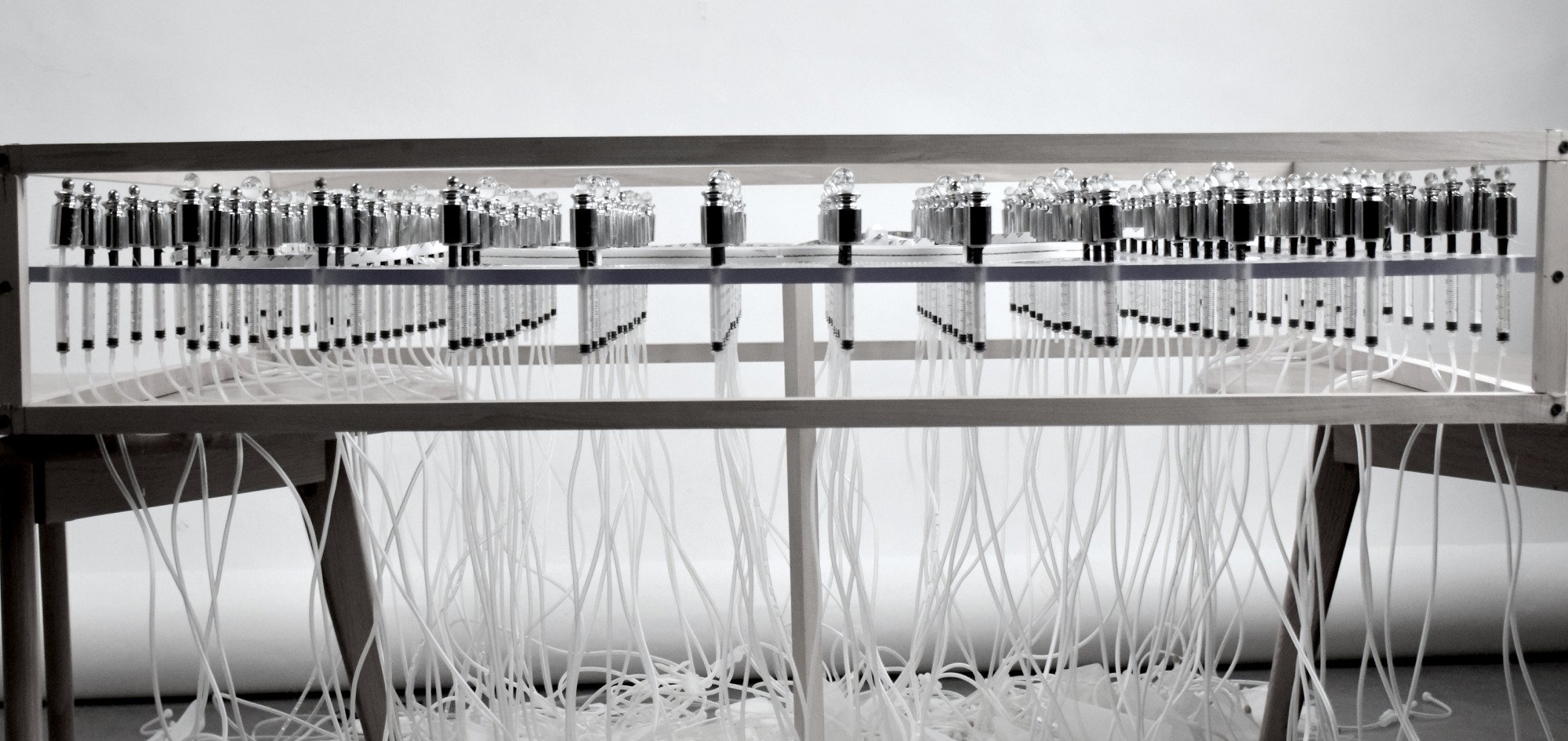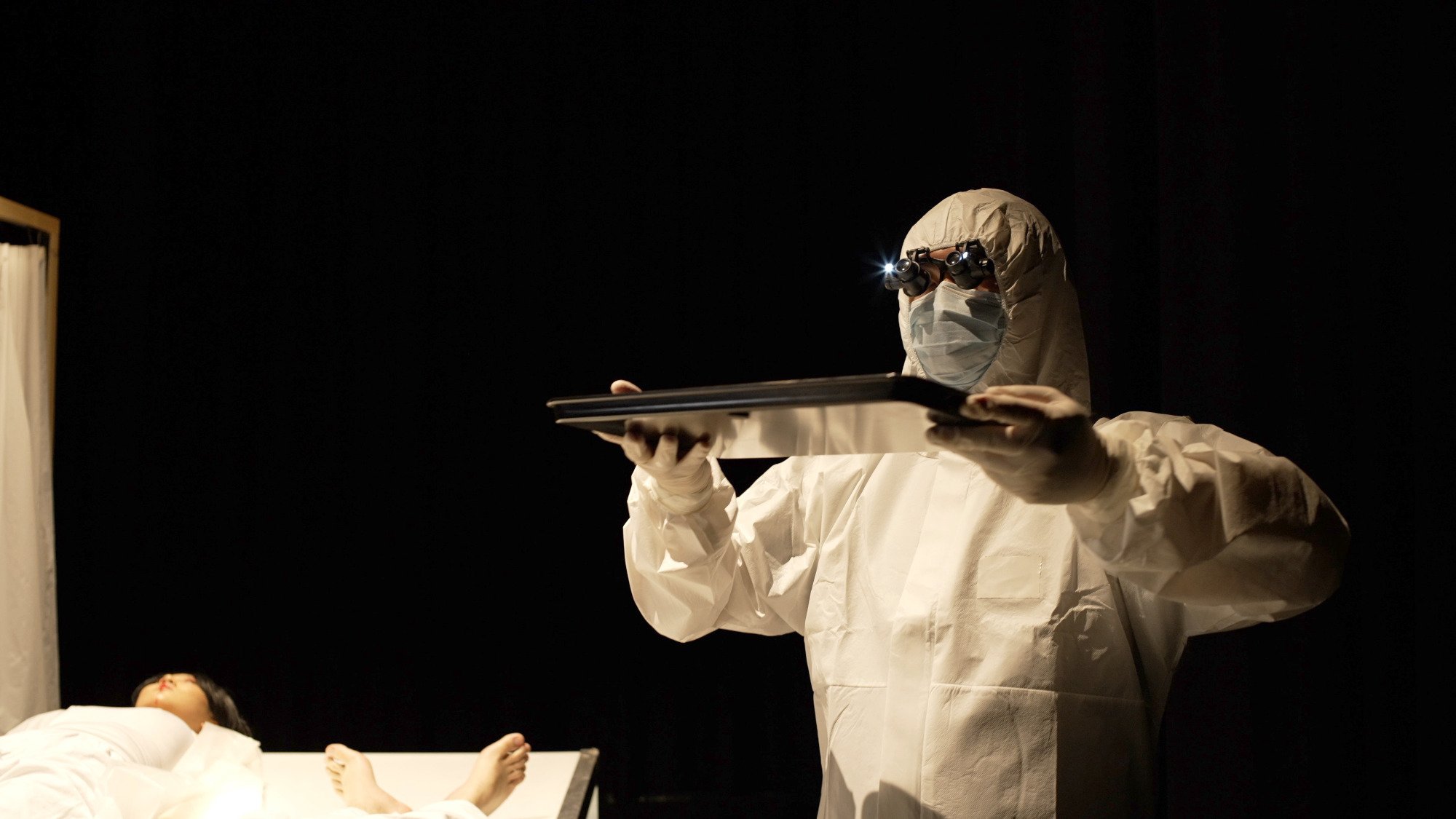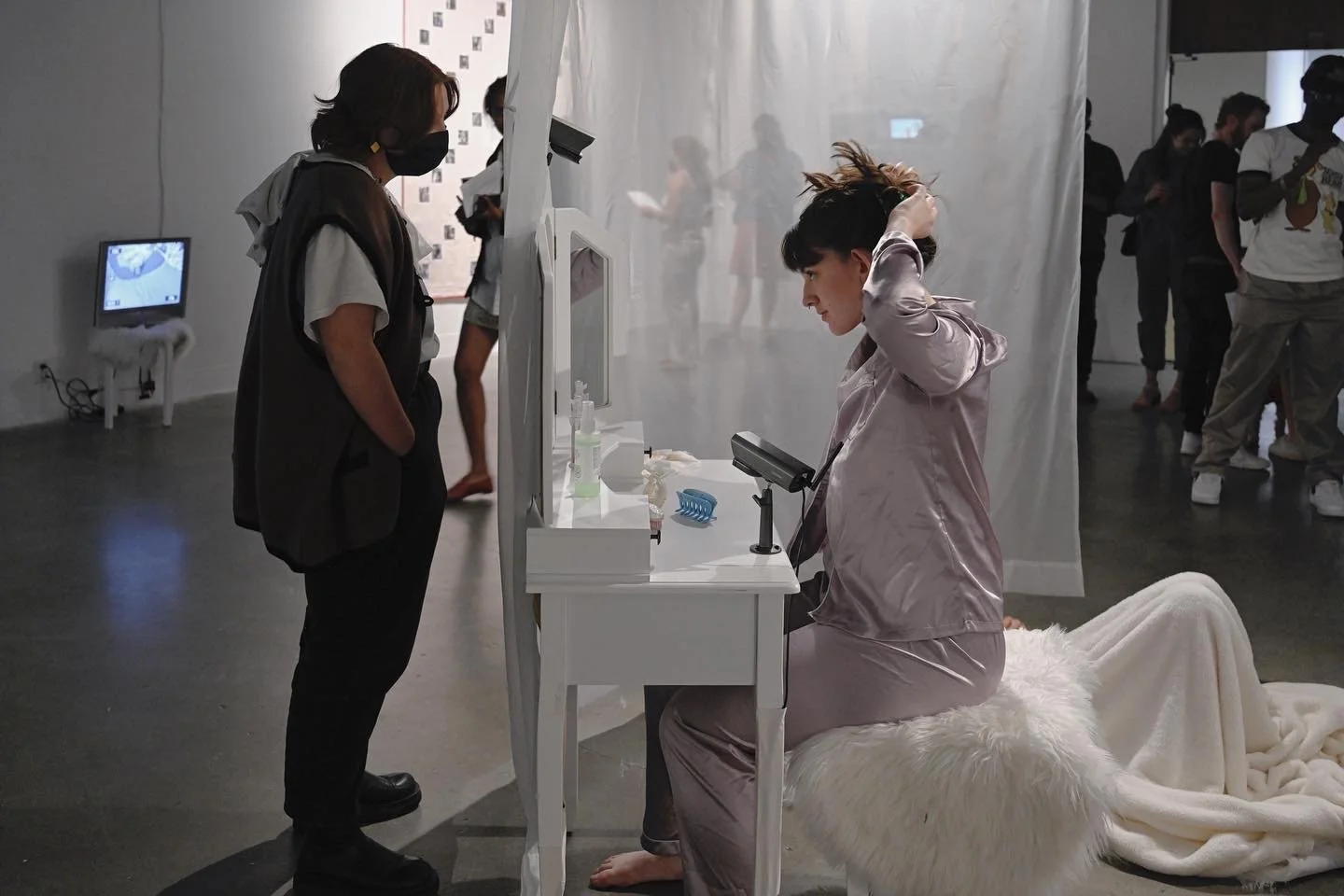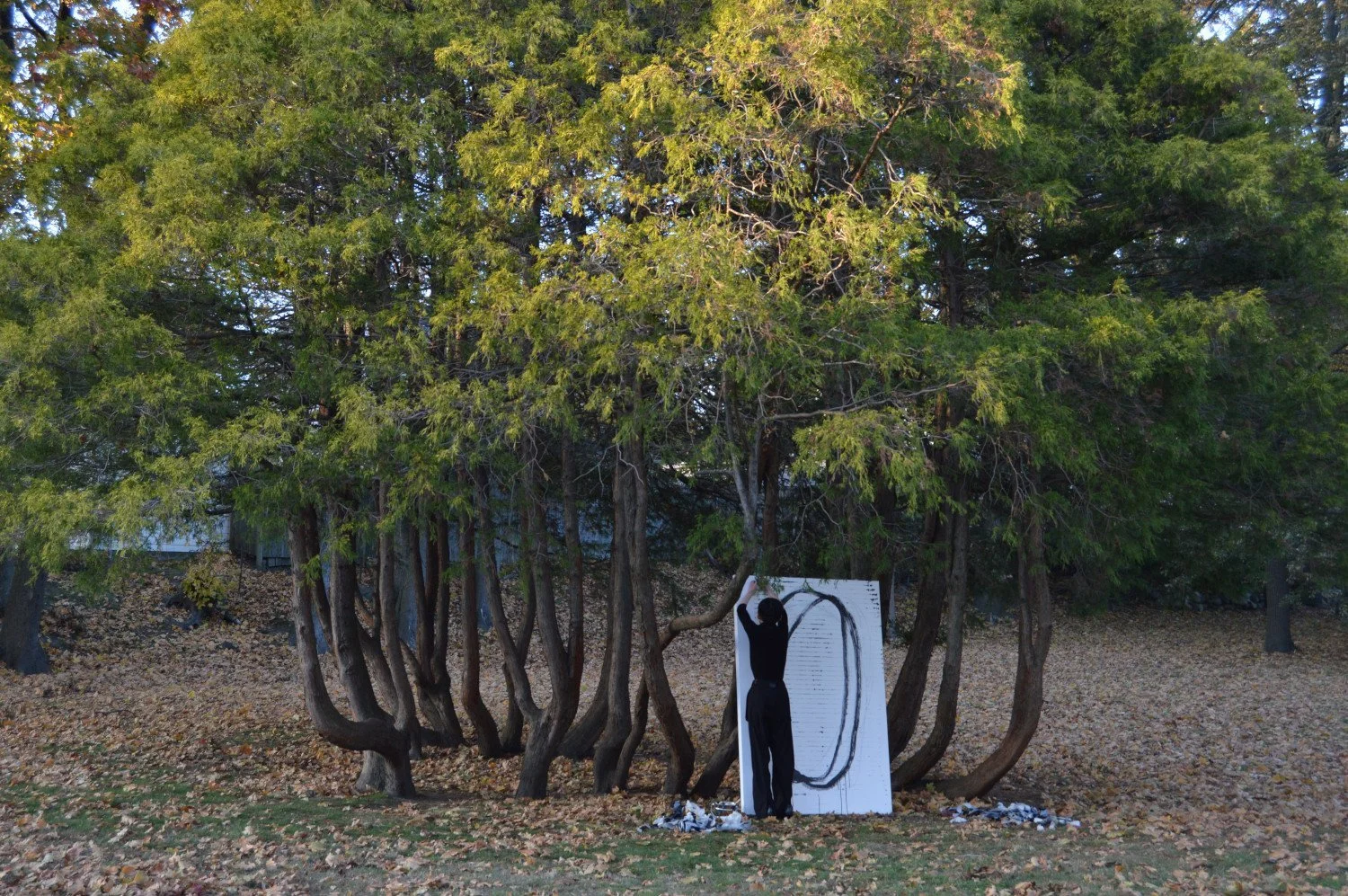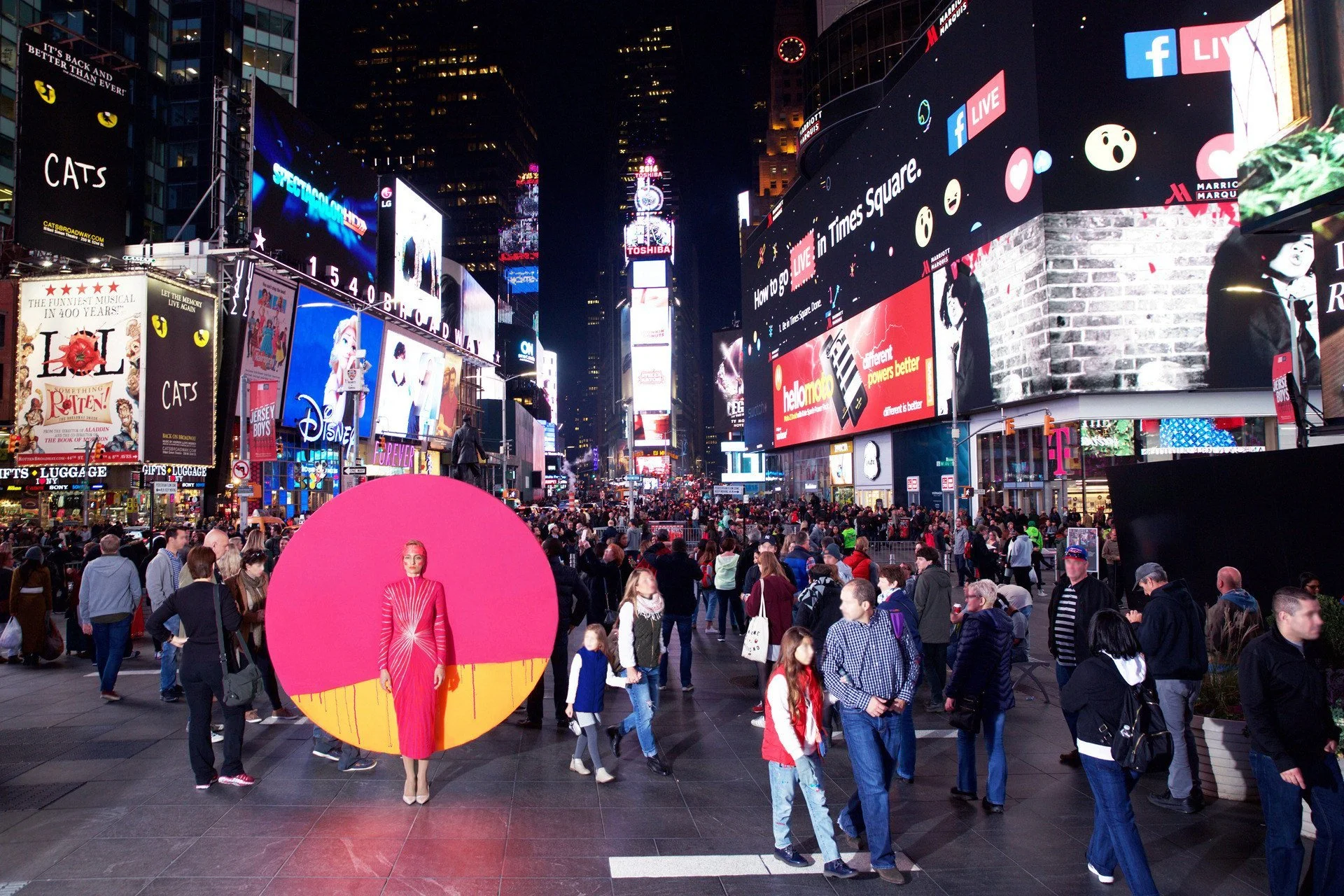10 Questions with Liu Gongjie
AL-TIBA9 ART MAGAZINE ISSUE11 | FEATURED ARTIST
Liu Gongjie has studied across backgrounds at the University of Florence, the Florence Academy of Fine Arts, the Polimoda Fashion Institute, and the Asian University in Taiwan, China. His work has won several awards in the design industry, including the Red Dot Award, the IF Design Award, and the A-design Design Award.
Liu Gongjie's works have been exhibited at home and abroad and included in many art journals. Most recently, his work was presented at Dutch Design Week 2021
ARTIST STATEMENT
Liu Gongjie is an interdisciplinary artist living in London. A graduate of Central Saint Martins MA Material futures, Liu Gongjie's work focuses on the impact of digital technology on our daily lives and builds critical discussions from a sociological perspective. He creates series of videos, installations, and stage artworks that discuss issues related to posthumanism, organicism, and material culture. His work looks forward to uncovering the human spirit behind technology in the age of algorithms for the public.
Emotionally Harmonious Cyborg Future, Film, screen size, 2021 © Liu Gongjie
Emotionally Harmonious Cyborg Future | Project Description
The project is a speculative design work. It explores a possible future in the form of a dance drama, where human beings take the initiative to transform themselves into a cyborg that combines the physical and mechanical and can perceive the emotions of others directly. How will this affect our daily lives? The technical props in the dance drama include emotional buttons, emotional storage crystals, and emotional clouds.
I look forward to guiding the audience through this project to think about the possibility of human-machine symbiosis in future life. Explore the possible forms of human existence in the future, including the possibility of cross-media integration of biology, machinery, and information. It will consider various aspects of physical cognition and criticize external constraints such as gender and cultural boundaries.
This project is based on a critical discussion of intellectual equality. I hope that the public can also join in the daily discussion of the future, which will greatly expand the diversity of human will and open up a future path for harmonious coexistence with technology.
INTERVIEW
You come from an industrial design background, and you later became an artist. What made you shift from design to art?
My previous work emphasized problem-solving as the core, serving customer needs, and being concise and clear. But such work often becomes part of a huge division of labor system; that is, contemporary industrial designers inevitably fall into the coercion of consumerism. Become the role of producing sensory stimuli for consumers. I'm not looking forward to being this character. I want to communicate directly with the public, and I want to explore the poetry of everyday life and make my own claims about specific social issues.
How much did your background prepare you for the work as an artist? Do you find any similarities in these fields?
I am grateful for my experience as an industrial designer, and it has been very rewarding.
First, I can be familiar with how the production system works and understand the needs of the public, which allows my creation to be rooted in the social context. The second is solid manufacturing skills. The knowledge of materials and the skillful use of creative tools allow me to focus on the artistic concept without restraint or being bound by reality.
Finally, interdisciplinary competence, as we are often faced with complex and even undefined problems, and we need to break boundaries and come up with creative solutions. This is good training for me.
In general, I think there is a high degree of similarity in practice as an artist and a designer. It's just that as an artist, I will be more relaxed, and I can express myself more freely.
Eternal life, mix media, screen size, 2019 © Liu Gongjie
In your work, you confront issues related to posthumanism, organicism, and material culture. How do you incorporate such themes in your production?
Overall, my work is centered on technology critique. I explore how to make technology work better and better. I build bridges between the public and professionals and build critical discussions, thereby seeking a more desirable future for our society. To this end, I maintain an intensive focus in several related areas.
About posthumanism:
My projects focus on the connection between the physical and virtual worlds, revealing and presenting the inner connection between these two dimensions. Explore how human beings will become trans-boundary and trans-dimensional beings in the future.
About material culture:
Matter as a narrative medium is ubiquitous in my projects, and I think the matter is a good medium for conveying information and emotion. Creating a series of physical props is my project's way of maintaining communication with the fish public.
About Organicism:
On the one hand, I will focus on the relationship between humans and ecology. More importantly, I will be able to embrace a diverse narrative, including cultural diversity and technological diversity. It is actually very important to look at each other's differences with an equal and inclusive mentality.
Your series Emotionally Harmonious Cyborg Future "explores a possible future", where human beings transform themselves into cyborgs. How did you come up with this concept?
The key to cyborgs is first found in Donna Haraway's article "The Cyborg Manifesto: Science, Technology, and Socialist-Feminism in the Late Twentieth Century".
The idea of cyborgs is also widely used in literary and artistic works. Still, thanks to the great advances in digital technology recently, this idea has become an increasingly part of our reality. Therefore, in the 2020s, it is very valuable to explore human-machine symbiosis and the impact of digital technology on human beings. So I created this dance drama, which uses everyday life as a scene to show people how a cyborg human can cope with the challenges of life.
Dot array, installation, 210x120x40 cm, 2018 © Liu Gongjie
Do you think that human-machine symbiosis is the future we are about to witness? And how can this symbiosis, in your opinion, influence art?
Yes, it is already our reality. In contemporary times, personal digital terminals such as mobile phones and watches have become part of our bodies as our technical organs. Without them, our daily life would encounter many difficulties. Our symbiosis with technological things is an immutable fact, but I would love to see it happen. From an artistic point of view, I think its influence is mainly on the diversification of Media. In the past, artistic creation always sought material carriers, just like paper to painting and materials to installations. But now, the first piece of code, a beam of light, a piece of information, or a relationship can itself be a medium for art. This will greatly expand the boundaries of the art form. As artists, we have more choices to express our ideas.
From borders to membranes, borders mean absolutely unbreakable, which keeps artistic creations typed and isolated from each other because we are stuck in an absolutely mechanical way of knowing. But when we become human beings, the unity of man as a subject has also been broken. This means that there is no absolute boundary to speak of, and the membrane becomes an effective way to limit the respective forms, and the information can communicate with each other. This will bring about a huge internal drive for artistic creation. And more diverse artistic practices emerged.
The work is a mix of performance and visual arts, that you define as a dance drama. How did you choose these outcomes and how has it influenced the work?
I actually learned a lot from this project. In the past, I used to plan a concise path and present a clear plan. This is the way a designer works. However, during this project, I began to learn to take nourishment from my team members, who are professionals in their respective fields on the one hand, and I was able to start enjoying the feedback the environment gave me to advance the project.
In my specific work practice, I follow the rule of thinking through making. So we will pay close attention to the emergence of inspiration in the scene and make it a part of our work. It really improved our ability to deal with emergencies under the circumstances. And I found that there is room for each of our talents, which is a very beautiful creative process.
Regarding the dance drama, you see that it doesn't have a lot of quick transitions and dynamic movements. I actually got inspiration from traditional oriental dramas, whether it is Chinese Peking opera or Japanese Noh drama, we can see highly stylized movements. I prefer to call it an interpretation of life, a symbolic expression. I look forward to letting the audience see the commonality hidden in daily life and find a momentary connection in their own experience.
Emotionally Harmonious Cyborg Future, Film, screen size, 2021 © Liu Gongjie
Emotionally Harmonious Cyborg Future, Film, screen size, 2021 © Liu Gongjie
What was the most challenging part of this project?
Limitations of the external environment. At that time, due to the epidemic, the school was still semi-closed, and we could hardly get any effective resources, venue personnel, and equipment support from the school. We had to build a variety of ways to do backup solutions. And because the nodes of the deadline are so close, I have to be strong and face those problems head-on. Therefore, the creative process is not easy.
Being my first time as a director, this was an interdisciplinary attempt. As a director, I am inexperienced, so I need to continue to learn in the process, such as mastering the shooting scene, dealing with emergencies at any time, and maintaining tacit communication with my team members. Luckily, we ended up on schedule. Thanks to my team members, I am proud of them.
Let's talk about the future. Is there anything you would like to experiment with? Or any new technique you would like to incorporate into your production?
I'm very interested in interactive imaging, and maybe it's not a new technology. But it does change the way we interact with video art practices. It is a visitor-centered, multi-line narrative. Higher requirements are put forward in creation. This in itself is an interesting thing. But, more importantly, it highlights an underlying default concept. That is, there is no single way of perceiving and presenting events, we live in a diverse world, and we encourage differences and engage in dialogue with an inclusive mindset.
Hybrid Biolondon, installation, 45x40x35 cm, 2019 © Liu Gongjie
What do you think of NFTs and all the recent changes in the art world that came out in the past couple of years, such as digital exhibitions and art fairs?
First of all, I have to affirm the progressive significance of its emergence. I have tried NFT, which greatly encourages the creation of digital art. Each digital artwork has its own unique identity. This addresses digital art concerns about intellectual property issues. But in essence, I think that NFT brings a kind of path innovation, not ontology innovation. We're just incorporating digital artwork into the ranks of art exhibitions. And the way of viewing/evaluating artwork hasn't changed much. Therefore, there are many capital promotions in the current overly sought-after method. As an artist, it is better to do more within one's ability and not give up one's original creative intention to pursue capital.
I have nothing against the digital exhibitions and art fairs spawned by NFTs, which expand art creation and presentation forms, allowing more people to find their own narrative style. However, the current NFT artworks are still mixed, and the management method needs to be optimized. I look forward to a more benign NFT operation, which will become a big stage for artists to promote and present their works and ideas.
And lastly, what are you working on right now? Any upcoming exhibition or new series you are in the process of developing?
I'm creating new video work exploring the relationship between humans and our ecosystem, working in an interdisciplinary team.
It will be completed in the second half of this year. I am also looking for more extensive exhibition opportunities, and I hope that more people can see my works. I also welcome artists with the same interests and people from various professional backgrounds to create together. Let ideas fly!



